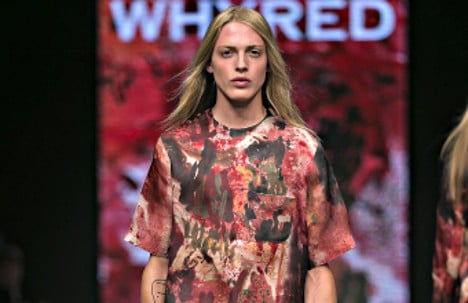Last season’s boy-meets-world thread continued throughout this collection but winter 2013’s dark, moody, even at times grungy looks were lighter, starker and cleaner. Clinical white and cloudy grey came from Whyred’s inspiration for spring/summer collection, Fårö and Ingmar Bergman’s Through A Glass Darkly. Whilst the sharp construction of the boys tailoring found its origins in the work of Dutch architect Rem Koolhaas.
IN PICTURES: Mercedes Benz Stockholm Fashion Week Whyred Men’s spring/Summer 2014
Whyred’s lads for spring/summer 2014 were transitional Peter Pans; caught somewhere between boy and man. Confusion was further implemented in Neo-camouflage caps worn with matching shirts, sneakers and loose-fitting suits in stone, steel and strait-jacket white.
Whyred’s signature parka made an appearance over dapper tailoring, in the designers’ own words, “to confront the sharp dressed with the casual”. It worked. Any notion of the impeccably-dressed gentleman was down-played with caps, that most divisive of trouser – the harem – worn with a slim-fitting blazer and knee-high socks.
FOR FULL FASHION WEEK COVERAGE: Dagmar, Carin Wester, J. Lindeberg and counting – reviews and galleries of Sweden’s top fashion designers here
Whilst the girls had a more extensive palette of peach Bellini and moss green to play with, the men were either sober in white, angsty in black or nonchalant in pale grey.
IN PICTURES: Mercedes Benz Stockholm Fashion Week Whyred Women’s spring/Summer 2014
Highlights included matching silk tee and trousers in dappled Whyred Red – comic book villain crimson – with a matching pyjama suit for the girls; a nod to something beneath the surface.
The contrast between content and confusion, youth and maturity, casual and sharp played out well. At first glance, things appear simple; introduce muddled prints and the intentionally restrained use of colour and Whyred boys for spring/summer 2014 aren’t really sure who they are.
Victoria Hussey




 Please whitelist us to continue reading.
Please whitelist us to continue reading.
Member comments